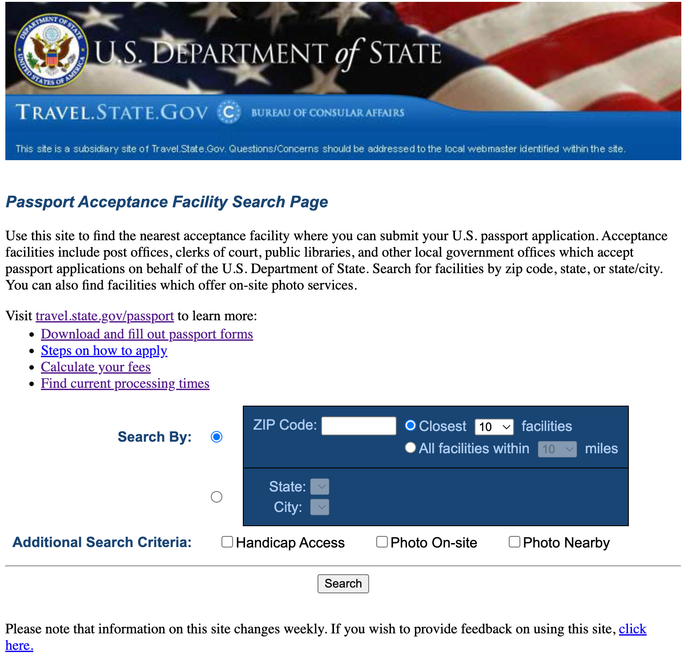Your Guide to Obtaining Your Child's Passport

Securing your child's first passport marks an important travel achievement.
However, capturing the ideal passport photo of a baby who can’t hold their head up, ensuring both parents are present for the in-person application, and remembering to renew the passport every five years (actually, every 4.5 years) can be a bit less thrilling.
If you want to travel abroad with your entire family, putting in the effort is essential for the enjoyment. Here’s what you need to understand about getting your child's U.S. passport.
Fundamentals of Child Passports
After your baby arrives, be sure to request the birth certificate right away.
While you can prepare for life post-baby in many ways, getting a passport is not something you can do beforehand.
Once your little one is born, promptly obtain a certified birth certificate, essential for the passport application. Ensure it’s the "long form" issued by the Bureau of Vital Statistics, not a keepsake from the hospital, and it must bear the registrar's signature with an official seal.
The procedure for acquiring the birth certificate can differ by location, but typically, you can request it within the first week or two after birth. You don’t need your baby’s social security number for the passport, but if you have it, it must be included.
Schedule an appointment.
If you urgently need your child's passport due to a family crisis, attempt to secure an appointment with a passport agency for life-or-death situations, but be aware that these slots are very limited.
If you have international travel plans within three business days, you may qualify for a life-or-death emergency appointment if a family member abroad is critically ill, injured, or deceased, according to the U.S. Department of State.
For urgent travel that isn't an emergency and is within 14 days, call 877-487-2778 to schedule an in-person appointment at a passport agency or center, keeping in mind that these appointments are also scarce.
Otherwise, you'll need to submit your child's completed passport application, along with all required documents, photos, and fees, in person at a passport acceptance facility. This may necessitate making an appointment.
 TRAVEL.STATE.GOV
TRAVEL.STATE.GOVWhen looking for passport acceptance facilities, you'll find courthouses and post offices listed as authorized locations to submit your passport application in person. In many cases, an appointment is necessary at these facilities before visiting; this applies even to locations that used to accept walk-ins.
Get your passport photos taken.
 TRAVEL.STATE.GOV
TRAVEL.STATE.GOVSome acceptance facilities may take your passport photos on-site, but many do not. It’s best to verify this ahead of time rather than assuming they will.
For passport photos, you must provide one recent color image taken within the last six months against a plain white background. The photo should measure 2 inches by 2 inches, with the head positioned between 1 inch and 1 3/8 inches (25 to 35 millimeters) from the bottom of the chin to the top of the head. No alterations or filters are allowed.
The photo should capture a neutral expression or a natural smile, with both eyes open, and the subject must face the camera directly, showing their full face.
In the photo, your child should not wear glasses, masks, hats, uniforms, or similar items. They should be dressed in everyday clothing, removing any headwear except for minimal jewelry that doesn’t obscure their face.
Passport photo rules are slightly more flexible for infants compared to older children and adults. For instance, a baby's eyes don’t have to be fully open in the photo.
It can be challenging to get a newborn to look directly at the camera, so focus on meeting other requirements. Placing the baby in a car seat with a white or off-white blanket behind them can help. We also found success with our youngest lying on a white sheet as an infant.
There are websites that can help crop your DIY passport photo to the required dimensions if you choose to take this route.
Collect your documents.
 TRAVEL.STATE.GOV
TRAVEL.STATE.GOVPrior to your appointment, it's essential to complete certain paperwork.
For most infants born in the U.S., you will need the following items to apply for a U.S. passport:
- Completed and unsigned DS-11 form.
- Certified birth certificate that meets the aforementioned criteria (this serves as proof of U.S. citizenship and establishes the parental relationship). If both parents' names are not on the birth certificate, you’ll need additional documentation, or you can provide a fully valid, undamaged U.S. passport (even if expired) as citizenship proof. (Digital versions of the birth certificate are not acceptable.)
- A copy of the front (and back, if applicable) of the citizenship evidence you are providing.
- Proof of the parental relationship, which may include the birth certificate, an adoption decree, or a divorce/custody decree.
- Parent's identification. (A valid driver's license or passport is acceptable.)
- Copies of each ID (both front and back).
- Both parents must be present with the child if the child is under 16, or you can complete form DS-3053 in the presence of a certified notary public if it's not possible to appear together.
- Submit a valid passport photo of the child.
- Payment for fees (total costs will likely be $135 or more based on your specific requirements — $100 to the State Department and $35 to the acceptance facility). Keep in mind that the acceptance facility may require a separate payment from the application fee, so bring multiple checks. If you have a photo taken at the facility, be prepared to pay an additional fee for that service.
Child passports are valid for only five years, and in reality, not even that long.
In contrast, adult U.S. passports are generally valid for ten years, so you might not realize that your child's passport has expired after just five years, especially if it was issued when they were under 16. Additionally, many countries require that your passport has at least six months of validity remaining for entry, which effectively shortens the usable life of a child's passport.
To add to the complexity, the rules regarding passport expiration and renewal shift when children turn 16 and again at 18.
Children cannot simply renew their passports.
 PICTURENET CORPORATION/GETTY IMAGES
PICTURENET CORPORATION/GETTY IMAGESMost adults can renew their passports by mail, so you might think renewing a child's passport would be just as straightforward. Unfortunately, that’s not the case.
You can't simply renew a child’s passport; you must apply for a completely new one in person, just as you did the first time.
To sum it up,
While considering your child's passport, it might also be wise to evaluate whether your family could benefit from your kids having Global Entry or Clear, both of which require separate applications.
Obtaining your child's passport can be a hassle and will likely demand more effort than you’re accustomed to when renewing your own. However, once completed, you’ll have about 4.5 years' worth of passport stamps to collect and memories to create.
Continue reading for more helpful tips regarding child passports:
- If you need a passport urgently, this service might be the solution for you
- Passport processing times have decreased for the first time since February
- First-time U.S. passport applicants can apply in person at fairs this summer
- A guide to taking your passport photo at home
- Understanding the 6-month passport rule — what does it mean?
- Five lessons learned from renewing my passport for the first time
- Reasons to renew your child's 5-year passport after 4 years
- How to capture your baby's passport photo
- Why your family might consider getting Clear before your next flight

1

2

3

4

5
Evaluation :
5/5